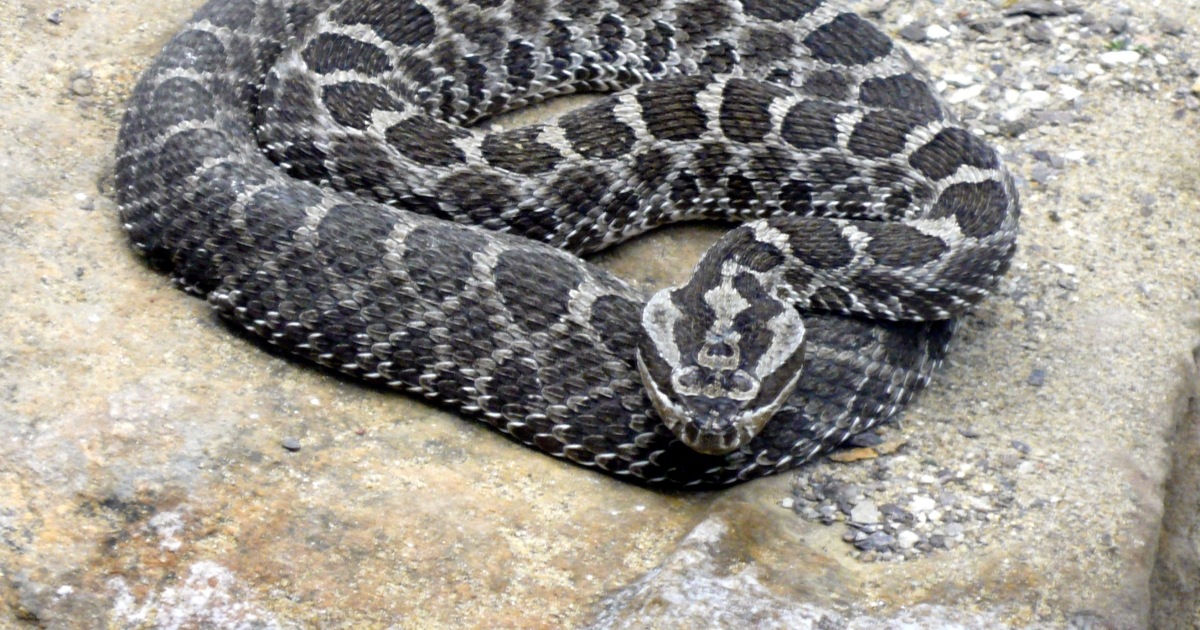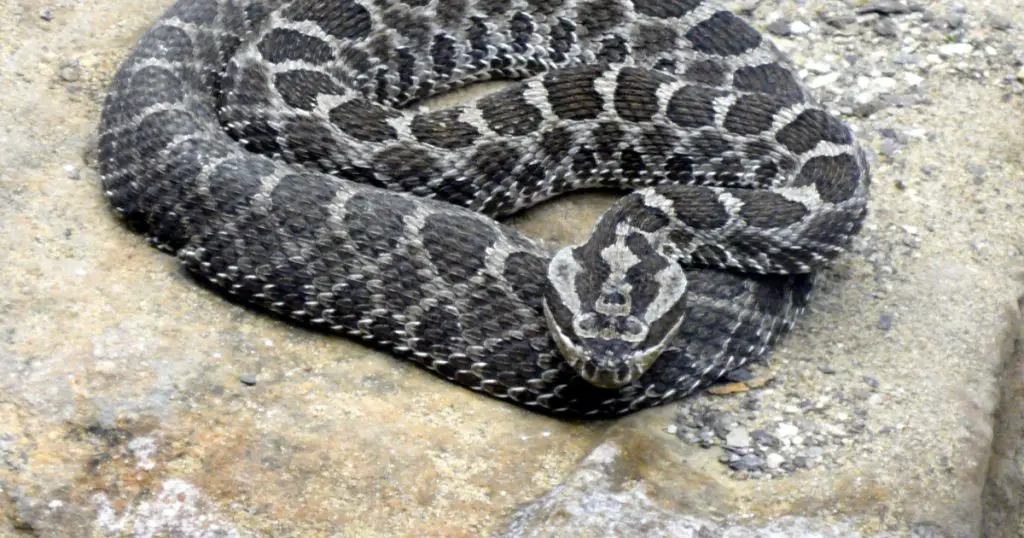In the world of wildlife, there’s always something interesting to learn. Today, we’ll be exploring the massasauga rattlesnake – a creature that sparks both curiosity and fear.
Native to North America, the massasauga rattlesnake is known for its distinctive rattle and venomous bite. But as human activity continues to impact their natural habitats, many are left wondering: are these snakes endangered? Join us as we delve into the current state of this fascinating species.
Yes, the Massasauga Rattlesnake is listed as an endangered species in both Canada and the United States. Their populations have declined due to habitat loss and fragmentation, persecution, and road mortality. Efforts are being made to conserve and protect this species.

Are Massasauga Rattlesnakes Endangered?
Massasauga rattlesnakes are a species of venomous snake native to North America. They are known for their distinctive rattling sound, which serves as a warning to potential predators. However, in recent years, concerns have been raised about the population of these snakes and whether they are endangered. In this article, we will explore the current status of massasauga rattlesnakes and the factors that may be contributing to their decline.
Population and Habitat
Massasauga rattlesnakes are found in a variety of habitats throughout North America, including grasslands, forests, and wetlands. These snakes are most commonly found in the Great Lakes region of the United States and Canada. However, their populations have been declining in recent years due to habitat loss, fragmentation, and degradation. According to the International Union for Conservation of Nature (IUCN), the massasauga rattlesnake is listed as a species of “Least Concern” due to its wide distribution and relatively stable populations. However, some local populations may be at risk of extinction.
One of the biggest threats to massasauga rattlesnakes is habitat loss. As human populations continue to expand and develop, natural habitats are being destroyed or fragmented. This can make it difficult for snakes to find suitable places to live and hunt. In addition, pollution and climate change can also have negative impacts on snake populations. For example, changes in temperature and precipitation patterns can alter the timing of hibernation and breeding, which can affect the survival of young snakes.
Conservation Efforts
Despite the challenges facing massasauga rattlesnakes, there are several conservation efforts underway to help protect and conserve these important snakes. For example, some organizations are working to restore degraded habitats and create new habitats for snakes to live in. This can involve planting native vegetation, removing invasive species, and restoring wetlands and other important ecosystems.
In addition, some groups are working to educate the public about the importance of massasauga rattlesnakes and other snakes. This can involve teaching people about the role that snakes play in ecosystems and dispelling common myths and misconceptions about these animals. By raising awareness about the importance of snakes, it is hoped that more people will be motivated to support conservation efforts and help protect these important animals.
Benefits of Massasauga Rattlesnakes
Although massasauga rattlesnakes are often feared and misunderstood, these snakes play an important role in ecosystems. For example, they help to control populations of small rodents and other prey species. This can help to prevent overgrazing and other negative impacts on plant communities. In addition, massasauga rattlesnakes are an important part of the food chain, providing food for other predators such as birds of prey.
In addition, massasauga rattlesnake venom has been used in medical research to develop new treatments for a variety of conditions, including heart disease and cancer. Venom from these snakes contains a variety of compounds that can have therapeutic effects when used in the right doses and under the right conditions. This highlights the importance of protecting massasauga rattlesnakes and other snakes for their potential medical benefits.
Conclusion
In conclusion, massasauga rattlesnakes are an important species of snake that play a vital role in ecosystems. However, their populations are declining due to habitat loss, fragmentation, and degradation. While the species is currently listed as a species of “Least Concern,” local populations may be at risk of extinction. To help protect and conserve these important snakes, it is important to support conservation efforts, educate the public about the importance of snakes, and work to restore degraded habitats. By taking these steps, we can help ensure that massasauga rattlesnakes continue to thrive and contribute to healthy ecosystems for generations to come.
Frequently Asked Questions
What is a Massasauga Rattlesnake?
The Massasauga Rattlesnake is a venomous snake found in North America. They are known for their distinctive rattle on the end of their tail that they use as a warning before striking.
These snakes are typically found in grasslands and wetlands and are most active during the summer months. They are often considered a keystone species, playing an important role in their ecosystem by controlling rodent populations.
Why are Massasauga Rattlesnakes important?
Massasauga Rattlesnakes are important because they help to control rodent populations, which can have a significant impact on the ecosystem. They are also important indicators of ecosystem health, as their presence can indicate a healthy and diverse ecosystem.
Additionally, Massasauga Rattlesnakes are culturally significant to some Indigenous communities, who consider them to be sacred animals.
What is the status of Massasauga Rattlesnakes?
Massasauga Rattlesnakes are listed as a threatened species in some areas and endangered in others. Their populations have declined due to habitat loss, fragmentation, and persecution by humans.
Despite their protected status, many Massasauga Rattlesnakes are still killed by humans who fear them or do not understand their importance to the ecosystem.
What is being done to protect Massasauga Rattlesnakes?
There are many efforts underway to protect Massasauga Rattlesnakes, including habitat restoration and protection, public education and outreach, and research to better understand their ecology and behavior.
Additionally, many organizations are working to reduce human-snake conflict and to promote coexistence between humans and Massasauga Rattlesnakes.
What can I do to help protect Massasauga Rattlesnakes?
There are many things you can do to help protect Massasauga Rattlesnakes, including supporting conservation organizations, learning more about these snakes and their importance to the ecosystem, and avoiding harming or killing them if you encounter them in the wild.
You can also help to reduce human-snake conflict by being aware of your surroundings when hiking or camping, keeping your distance from snakes if you encounter them, and reporting snake sightings to local authorities or conservation organizations.
The Massasauga Rattlesnake — How Venomous is it?
In conclusion, the Massasauga rattlesnake is indeed an endangered species. The ongoing destruction of their natural habitat, coupled with the illegal pet trade and the negative perceptions surrounding these creatures, have all contributed to their dwindling numbers. However, conservation efforts have been put in place to protect and preserve these snakes, including habitat restoration and public education programs.
It is important to remember that every species plays a vital role in the ecosystem, including the Massasauga rattlesnake. By understanding the importance of these creatures and taking active steps to protect them, we can ensure that they continue to thrive in their natural habitats for generations to come.
Overall, it is up to each and every one of us to do our part in preserving the biodiversity of our planet. Whether it be through supporting conservation efforts, or simply spreading awareness, we can all make a difference in protecting endangered species like the Massasauga rattlesnake.


